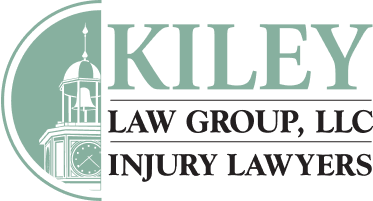I called very scared and uneasy and in pain from a dog attack. Doug Henderson called me right away and made the process so much easier and put me at ease the whole time. Everyone was wonderful to me and I appreciate all who were involved in handling my case. Thank you.
Robin Z.
I was very happy with all that Tom did. He is very professional and was responsive to me and my case.
~Sean K.
Outstanding in all communications. Never left you in doubt. Very professional and knowledgeable.
~ Lloyd M.
We want to thank you for all that was done for us going through our lawsuit. Your employees are exceptional and your firm always went above and beyond. Our experience was overwhelming for the settlement we received. We would highly recommend your firm to anyone.
~ Ronald M.
They were very patient and helped me through a process I wasn’t familiar with. I would gladly use them again if I needed help in the future. I was helped greatly by Doug Henderson at the office in Andover. He was knowledgeable and helped me to understand the procedures. Since I had no experience in understanding some of the forms and language of some of the paper work, he patiently helped me through the process and explained things as we went along. If needed, I would certainly turn to Kiley Law Group again.
~ Theresa B.
Doug Henderson was very helpful, professional, and kind from our first meeting.
~ Virginia L.
It has been a pleasure working with Doug. Right from the beginning, he was always up front about the details of my suit and always responded to my questions.
~ Carol L.
Very pleased with Mr. Kiley. He was very knowledgeable, kept me informed step-by-step. Very happy with the overall outcome, I would and have recommended other people to use this law firm. Thank you for all the hard work and time.
~ Victor A.
I am very satisfied how well our lawyer handled my case. He was very professional and very supportive. I was kept aware of the status and progress at all times. The quality of service provided far exceeded my expectations. It was a job well done and I certainly would recommend your services to anyone. My husband and I are grateful for the services Tom Kiley Jr. performed on my behalf.
~ Barbara D.
I believe every option was weighed with my best interest and dealt with perfectly. I worked with Doug Henderson. Doug could not have been nicer or easier to talk to.
~ Jake S.
The Kiley Law Group was very caring and concerned for my feelings. They explained all the options in great detail that even I, with my grief at losing my wife of 30+ years, was able to understand. They kept me informed about all aspects of the case. If I had any questions, they answered them or called me right back. I have a very warm feeling about them. Now that my case is over, I am almost sad that I will not be seeing them. I would and do highly recommend them. Their knowledge of the law was amazing. I cannot say enough good about them as lawyers and human beings.
~ Jamie B.
They represented me in a lawsuit. I was very pleased with the outcome. The settlement was very fair and I didn’t have to appear in a courtroom.
~ Anne L.
Tom Kiley, Jr. was very reasonable and honest in the way he handled my lawsuit. He was very thorough and I believe got me the best settlement possible. He kept me informed throughout the long process.
~ David V.
When I got hurt I was very confused at what I should do if anything. I called the Condo Association and told them that I had fallen. They assured me that they would get someone out there right away to fix the problem. Two months had gone by, nothing was done. I was watching television one night and saw an ad for Kiley Law Group. I called them to see if they could help me in my quest. Kiley Law Group was very understanding, and patient with me, they took me through the steps of what I could do. I went with a plan and was really happy I did, as they did eventually repair the pavement and roadwork that I was fighting to have done. I also received compensation for my injuries, which was a blessing as the bills were piling up. Many thanks, Kiley Law, for your understanding, and supportive help, which I received.
~ Former Client
Kiley Law Group goes above and beyond for their clients. Thanks to the hard work, dedication, compassion and legal expertise of Tom Kiley, Sr., Tom Kiley, Jr., and Doug Henderson, justice was served after a 6 year battle against my son’s former school. It was a very complicated case that only skilled attorneys could handle. Their investigation was impressively thorough as pieces of the puzzle were put together and hidden truths revealed. My son and I will be forever grateful for everything they have done.
~ Deborah P.
I can’t thank Doug and the team at Kiley Law enough for all they did for me. And I can’t recommend them enough. You will not find a better team to represent you!
~ Fred F.
My experience working with Tom was very pleasant. He was very helpful and returned my calls and answered my questions promptly.
~ Jay M.
The entire team was incredible handling my personal injury case from start to finish. They were diligent and very efficient resolving any issues as they arose. They showed me compassion and understanding during my difficult recovery! I would highly recommend the team to anyone.
~ Tanya C.
I was very satisfied with the outcome of my case from an automobile accident I had in July 2018. Doug Henderson did a great job working my case, interfacing with both my husband and myself. I highly recommend Kiley Law Group, LLC in the future. Thanks for your service.
~ Brenda H.
Kiley Law Group, specifically Attorney Henderson, recently handled a legal matter for me. Everyone I communicated with was very professional and friendly. My case was dealt with in a timely matter; I would certainly employ their services again. Thank you.
~ Merry B.
Pleasant experience despite the unfortunate situation.
~ Eric N.
I would recommend to anybody with personal injury. Doug Henderson was very responsive, determined, a pleasure to work with.
~ Ellen H.
I felt that they were very honest and professional and did everything that they said, without fail. They were nice guys, very prompt, and I would recommend them to anybody.
~ Paul D.
Excellent! Attorney Kiley was always warm and helpful. He never seemed to lack for my concern and always responded to me in a timely manner. I never felt forgotten and was never bogged down with complicated matters. It was a pain free process and I’m very satisfied with the results.
~ Brittany C.
I was seriously injured by an impaired driver. I looked at some law firms and chose Kiley Law Group. Doug Henderson called me within 24 hours and assured me that he would do everything to make sure I was covered medically and financially. Doug was compassionate and worked hard! I would highly recommend Kiley Law Group. I want to thank everybody for all the hard work on this settlement.
~ Robert O.
My experience at the law firm was very good. Everyone was inviting and made me feel welcome. I would tell that everyone was hardworking and motivated to do the best they could for me. I am happy I chose Kiley Law Group. The Kiley Law Group handled my personal injury case, and I have previously worked with one other lawyer. My experience was great and I would definitely recommend Tom Kiley, Jr. and the law group again.
~ Samuel G.
The Kiley Law Group handled my accident case. I am very satisfied.
~ Guy R.
Possibly the best personal injury law firm in Massachusetts.
~ John B.
Excellent. They handled my case very well!
~ Mimosa K.
I was very satisfied with the handling of my motor vehicle accident from 2013.
~ Helga K.
Kiley Law Group was extremely professional and compassionate in the handling of my case.
~ Scott K.
Tom asked all of the right questions and displayed both a strong knowledge of the law and compassion. I tell everyone about Kiley Law Group. Thank you, Tom!
~ Melissa F.
Attorney Kiley was absolutely great. He took the time to explain what was to occur and what to expect. Thank you so much. I would and will recommend. They were superior professionals.
~ Paul H.
My experience was very positive. Tom Kiley, Jr. was very responsive, attentive, and handled my case with empathy and care. I am very happy and satisfied with the outcome and the service.
~ Florenza A.
We were very happy with the job Tom did, with keeping in contact with us. Prompt and good outcome. Thank you.
~ Brenda K.
Kiley Law Group’s courtesy and confidence made this difficult time more bearable. Their knowledge and experience allowed me to relax and worry less. Thank you.
~ A. K.
My case was handled well and with a great amount of understanding. I was fully informed and communicating concerns was very easy.
~ Jaylyn K.
Tom Kiley, Jr. handled my auto accident case with a high level of professionalism and dedication. I am very happy with the outcome of my case and would not hesitate to use them again in the future or refer to friends and family. Thank you!
~ Meaghan C.
I was thoroughly impressed with the professional services offered with Kiley Law Group and will continue recommending prospective clients. I would like to take this opportunity to extend my gratitude to Tom Kiley, Jr. for everything that has been accomplished throughout this sensitive time.
~ Kim P.
Everyone involved with my case was outstanding. Everyone was very polite and kind. It was a very easy process with the Kiley Law Group. I highly recommend this law group for everyone. It was a pleasure working with Tom Kiley, Jr. and Tom Kiley, Sr. All of my expectations were met.
~ Daniel M.
Very professional. There was no problem with being kept informed. Although I was out of state, I received emails, faxes and phone calls.
~ Carole K.
Tom Jr. helped me with compensation for a motor vehicle accident. He was extremely pleasant to work with.
~ Richard P.
Great experience, kept me informed throughout the entire process. I felt like he was really on my side and pushed for my rights. Just wanted to say thank you for all the help with the last 2½ years.
~ Keith J.
Attorney Henderson was extremely helpful during the whole process. Every question I had was quickly answered for the most part on the same day. I am thankful for all the hard work he has done on my behalf.
~ Michael M.
Any time I had a question or concern, both Cindy or Attorney Kiley would be very quick to respond. Very personable and caring. They take time to explain the processes and ensured that I had a clear understanding. I highly recommend to anyone that would be in need of services. Everyone is very friendly and you are treated as a person, not just a case.
~ Andrea D.
From the moment I walked through the door, I was treated with the greatest care and concern. I could tell after the first meeting that Doug would get me what was mine. The professionalism and respect were top notch. This was my first lawyer interaction in my lifetime and they set the bar extremely high here. Kiley Law Group represents my new standard for service and excellence. Thanks, Doug, for everything.
~ Joshua C.
Everyone was friendly and helpful. Phone calls were promptly returned. The progress of the case was updated regularly. The case was settled to my satisfaction and payment delivered quickly. I will always use Kiley Law. Group was excellent. The people I dealt with were attentive and responsive and the results were perfect.
Former Client
I was very pleased with the experience. Attorney Henderson did a great job of taking care of the whole case. Keep doing commercials on TV. When I looked up local lawyers on the Internet, I saw Kiley Law Group and had remembered seeing commercials. That’s why I chose you.
~ Michael M.
I greatly appreciate all the help they gave me. Kiley Law Group was a great choice for me. It was made very easy; I barely had to do a thing. They took care of me well. If you want easy, fast, respectable service, then this is the place to go.
~ Matthew B.
Very helpful, great communication. I didn’t feel too lost or out of my depth through the entire process. I liked that my calls or messages were answered in a timely fashion.
~ Saugia S.
Kiley Law Group was extreme. My experience was exceptional. I was always informed and kept abreast of status. I felt everyone at the law office kept me in the loop. This proved to be a positive circumstance based on the timeline of my medical treatment and length of case. Professional and compassionate in the handling of my case.
I believe every option was weighed with my best interest and dealt with perfectly. I worked with Doug Henderson. Doug could not have been nicer or easier to talk to. Returned every phone call promptly if he wasn’t available. Very satisfied with my overall experience.
~ Keith W.
I would tell anyone injured in an accident to see Doug Henderson, because I know he will handle your claim better than other firms. I am very pleased with my experience with Doug Henderson and the Kiley Law Group.
~ Kathleen T.
From the first interview, I was amazed at the level of professionalism shown to me for an incident that I really didn’t believe was worthy of a lawyer. They worked and got me a settlement way above my expectations. This is a firm that can be trusted.
~ Roy K.
It was a good experience to have a patient and professional lawyer on my side.
~ Ruth F.
The end result was very good. I would definitely recommend them to people!
~ Valerie N.
My experience was very professional. Tom was always available when I called and kept me updated frequently.
~ William T.
I found that everyone I dealt with at the firm was professional and caring. I can’t think of one way to improve your law office. Never change. You are wonderful.
~ Cynthia C.
Very informative and supportive. Always kept me updated and was very helpful, nice, and respectful.
Bertilia T.
There is nothing I would change. I’m satisfied with the service provided. Very professional and they kept me informed of the process.
~ Yudelka T.
The Kiley Law Group handled my auto accident case. I appreciate all the time and effort you put into my case. Thank you again.
~ Angela M.
Kiley Law Group was extremely helpful. They were courteous and kind through my whole ordeal. I would recommend them to friends and family.
~ Steven G.
Attorney Doug Henderson is an excellent attorney, he put me at ease on day 1. He kept me updated on the whole process, and delivered a fair settlement in a timely fashion. Thank you, Doug!
~ Former Client
I had nothing but a positive experience dealing with the Kiley Law Group. Every time I called or emailed, I found myself dealing with a courteous person who was able to assist me with my questions. My lawyer, Doug a Henderson, was patient and answered all my questions and was kind and understanding.
~ Kathleen O.
After my auto accident I was consumed with paper/calls in regards to my case, so a friend referred me to Tom Kiley, Jr. After speaking with Tom Kiley, Jr., he put me at ease and handled my case. He always kept me informed with what was going on and helped during a difficult time. I appreciate everything he has done, and for always going the extra mile. I will definitely refer anyone to Kiley Law office if they need a personal injury lawyer.
~ Elizabeth C.
I loved working with Mr. Kiley, Jr. I initially started with Mr. Kiley, Sr. and he is an amazingly knowledgeable and professional lawyer. Mr. Kiley, Jr. is an absolutely sharp and honest representative who always had my best interest at heart. I was always guaranteed a call back if he was unavailable. The advice I received was unprecedented. Thank you, Kiley Law, for supporting me during the untimely death of my dad. I appreciate your invaluable counsel.
~ Former Client
Everyone was friendly and helpful. Phone calls were promptly returned. The progress of the case was updated regularly. The case was settled to my satisfaction and payment delivered quickly. I will always use Kiley Law.
~ Former Client
I am so grateful for the Kiley Law Group. They helped me so much after a bad car accident. They were kind, patient and generous. I would and do recommend this law firm to anyone.
~ Former Client
Very positive experience. Professional, courteous service. Always available when I had a question. I highly recommend the practice.
~ Former Client
I was a passenger in a car accident. Their service is excellent. I recommend this law firm.
~ Former Client
I had a great experience from beginning until the end.
~ Former Client
My accident case was handled in a very satisfactory manner. My thanks to Tom Kiley.
~ Rostron K.
I was rear-ended in the Spring of 2013 and received a concussion. From the start, Kiley Law Group was caring and totally professional as they stayed in touch with me constantly. Attorney Doug Henderson was a joy to work with and I received more money from the settlement than I had imagined. I would recommend them 100% to anyone.
~ Chris M.
Right from the start I felt that your feedback relating to our claims was spot on and we were in very good hands with Kiley Law Group. I would recommend Kiley Law Group to anyone who wants the best legal advice! Thank you again for all your guidance and expertise during this process. The Kiley Law Group was exceptional in dealing with our case.
~ Maureen G.
I was comforted and felt completely at ease knowing the Kiley Law Group was handling my case. I would absolutely recommend them, and especially Doug Henderson.
~ Jasmine O.
I had nothing but a great experience working with Kiley Law Group. They were very helpful and always kept me informed on my case. I would highly recommend them to anyone.
~ Sean K.
Good experience, my calls were always answered. Doug Henderson was awesome He guided me through the process and advised me. He always kept things simple and if I did not understand something he took the time to explain in detail. He also got my claim settled in a timely matter. So I would refer Kiley Law Group to anybody that need experts to walk them through their claim.
~ Pedro A.
The Kiley Law Group represented me in my motor vehicle accident claim. Mr. Kiley handled said case in a very professional manner, always answering any questions that I had and he always kept me informed and up-to-date. Thank you, Mr. Tom Kiley, for representing me with my claim.
~ Sally K.
Kiley Law Group did everything, kept me informed as to their progress, and I would recommend them to anyone!
~ Roland C.
Very easy to find and for a first time experience with a law group it was very client-friendly. Very friendly staff!
~ Ramon B.
Very happy. Mr. Kiley, Jr. came to my house right away after my accident. He and Ms. Kahn worked very hard to represent me.
~ Rene G.
Very good representation, always communicated with me and kept me updated on progress. Would use again.
~ Adam L.
At a time when I was at my most vulnerable, Kiley Law Group made me feel cared for and comfortable, like I was their only client. I must have called them constantly and with a million questions. They were prompt and thorough with their responses. Don’t change a thing.
~ Janine O.
What can I say about the Kiley Law Group? They are outstanding! From the initial call to the end results nothing but professionalism, great communication. My expectations were always set properly. Thanks for the great hopefully once in a lifetime experience. Kiley will always be my go to!
~ Larry L.
Doug Henderson is devoted to ensuring his clients’ needs are addressed in a timely manner, with little to no effort required by his client. Doug was always very personable, easy to talk to and made me feel comfortable throughout the entire legal process. He took the time to understand exactly what had occurred during the automobile accident, as well as the weeks, months, and three years to follow. The dedication of the Kiley Law Group team was top notch, communication was clear and concise, and they successfully won my case. I would highly recommend this firm to anyone looking for legal representation. Thank you Kiley Law Group for making the process easy, and a special thank you to Doug Henderson for all your support over the past three years!
~ Bobbie-Jo S.
The best phone call I ever made was to the Kiley Law Group. I was struck by a vehicle that ran a red light. While my car was totaled, I thought I was okay and actually made the decision to walk home. After all, I was only about five minutes from the house. Shortly after, I was in the ER at a local hospital. Thanks to Doug Henderson, I was able to get through what was a very long and very expensive recovery process. He walked me through all the steps I needed to take to get the appropriate care and was always available for questions of any kind. His periodic check-ins over the phone got me through some discouraging days. Doug was a very supportive advocate at a time when I was not only hurting but very overwhelmed. I would not hesitate to recommend Doug or the Kiley Law Group to anyone.
~ Ellen M.
I was very impressed with the Kiley Law Group. They were very helpful, kind and knowledgeable when it came to my case. I would recommend Kiley Law Group to everyone, and I will always use them if ever needed. Very professional, loved working with Doug Henderson. I couldn’t be more happy with the Kiley Law Group with the way my case turned out and how helpful Doug was. Thank you for everything.
~ Christopher S.
My experience has been wonderful! Everyone in the firm has been extremely helpful and sweet! Thanks for helping solve this with me. I couldn’t be more pleased. I was very happy with everything done for me here at Kiley Law Group! I would recommend anyone who asks of a great place to go if they need a personal injury lawyer. Thank you for everything!
~ Shannon M.
Doug Henderson from Kiley Law represented me after I was involved in a car accident while I was working. I was amazed at how easily he guided me through such a traumatic experience. He was always available to me anytime I reached out to him. He resolved my case as fairly and swiftly as possible. I will and have referred many friends to the law group. I couldn’t be more pleased. Thank you so much for all your help over the past two years. I don’t think I could have gotten through it without you!
~ Carole K.
In May 2016, we were hit head-on by a young driver who was watching her phone instead of the road. After being pulled out of our car and transported to the emergency room in an ambulance, our first call was to Attorney Doug Henderson from the Kiley Law Group. He started working on our case right away and within a matter of months we received compensation from the insurance company. Due to Attorney Henderson’s hard work, we received checks which were far greater than we initially imagined.
~ Nicole G.
I would absolutely recommend the Kiley Law Group to anyone. After my accident, I initially contacted my family lawyer. I was very unsure what would happen and this is where I turned. After a few weeks and some research, I looked at Kiley Law Group and decided to contact them. Personal injury is what they do and after my initial meeting, I thought they would do the best job for me. I never worried or gave much concern for the next year. Every question I had was answered and they went beyond my expectations as to my settlement. They made the best of a bad situation. Many people who get hurt don’t know where to turn and what to do. I didn’t, I admit it. Attorney Kiley was superb. Every phone call was returned quickly, every question answered. All medical bills were taken care of. Any chance I get, I will recommend the Kiley Law Group!
~ Douglas A.
Kiley Law Group is outstanding in service and helping customers to get through some terrible times that require expert help. Attorney Henderson answered all of my questions and clearly explained everything in the process. He was so helpful, works with great care and compassion with clients. I would highly recommend Kiley Law Group for times of need and I am very grateful for the services provided to me.
~ Michelle B.
In Aug 2021 I was involved in an auto accident that would change the trajectory of my life. The aftereffects of the impact resulted in major surgery to relieve pressure on the spinal cord / nerves as well as to stabilize the spine. Better known as ACDF Surgery. With concerns of impending medical expenses and financial losses it was in my best interest to consult an attorney to protect my future interests.
I discovered Kiley Law Group based on their stellar reputation for integrity & moral principles along with a vigorous advocacy for victims rights. I was blessed to be assigned Attorney Douglas Henderson along with Paralegal Jennifer Robinson (who’s a rock star btw).
Jennifer is empathetic, competent and a gem of a communicator.
The professional and personal care that they have extended to me has been beyond compare. Knowing my future was in the capable & caring hands of Attorney Henderson & Paralegal Robinson has been such a source of comfort for me. Kiley Law Group is hands down the best in the industry! Without hesitancy I would secure this Law Firm.
~ Terrance O.








